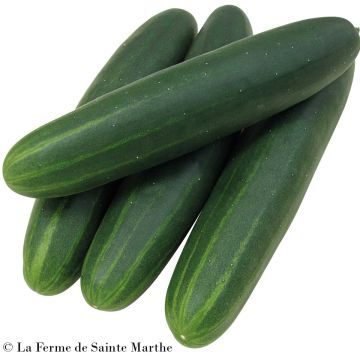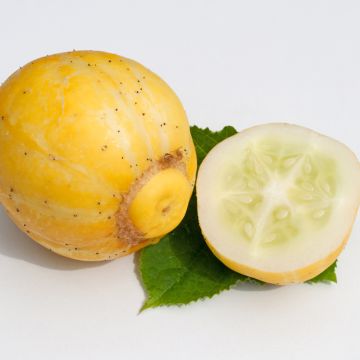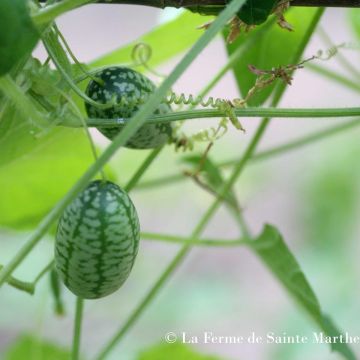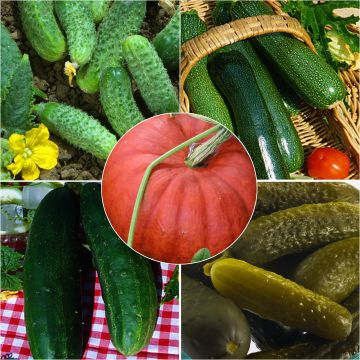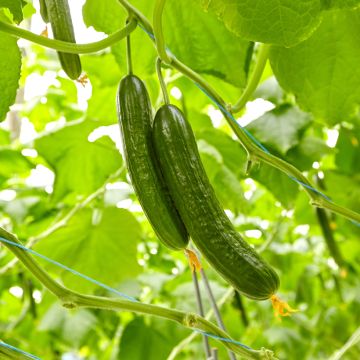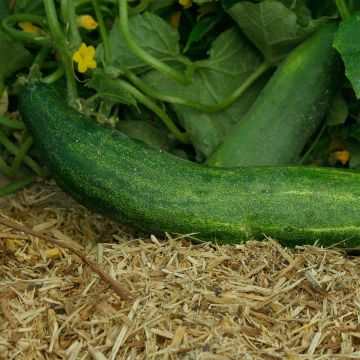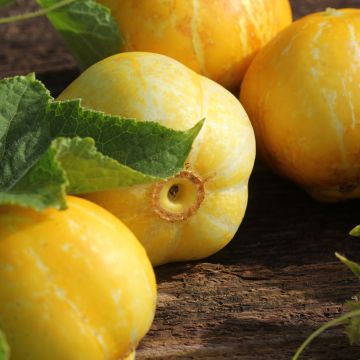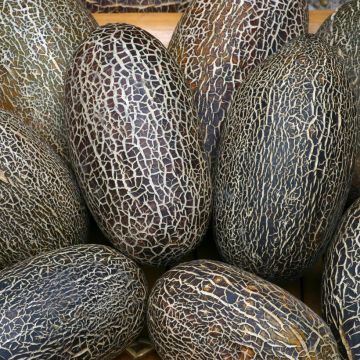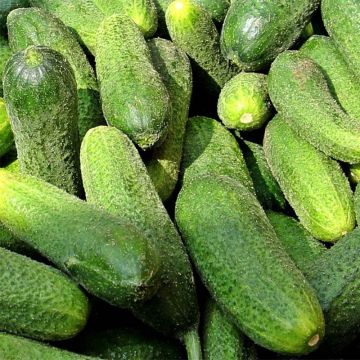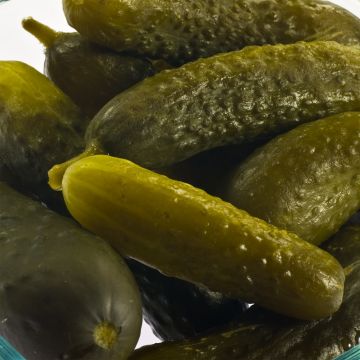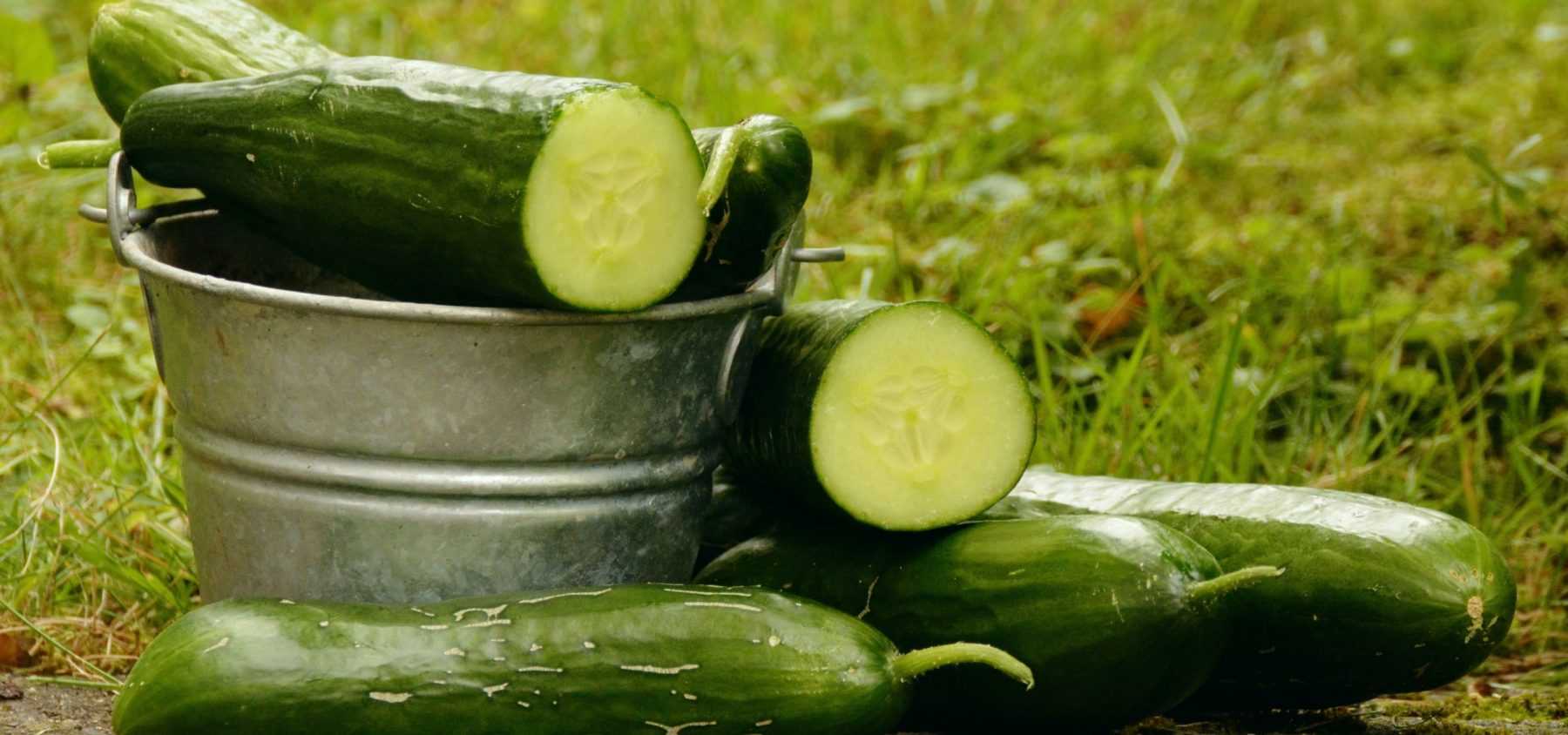
Growing Cucumbers and Gherkins Successfully
in the vegetable garden
Contents
Location and soil
Gherkins and cucumbers belong to the same species, but gherkins are harvested prematurely. They thrive in sunny locations, in light, loose and moist soil. They appreciate well-manured ground, previously enriched with mature compost or manure (3 kg per m2).
Cucumbers and gherkins pair well with corn, but avoid planting them near tomatoes and potatoes.
Sowing and planting
Direct sowing in May is possible, but preparing or purchasing seedlings for transplanting is the most commonly used method.
Sowing takes place from March to May, indoors in a warm environment (minimum 16°C). In pots, about a month before the intended planting date, place 2 or 3 seeds in a special seed compost and water with a very fine spray. When the first true leaves appear, keep only one seedling per pot. Maintain the young plant at a mild temperature, ensuring the growing medium stays moist but not waterlogged.
Planting in the garden occurs in May, once all risk of frost has passed. Space the plants 50 to 60 cm apart in rows set one metre apart.
Discover other Cucumber
View all →Available in 1 sizes
Available in 1 sizes
Available in 1 sizes
Available in 1 sizes
Available in 1 sizes
Available in 1 sizes
Available in 1 sizes
Available in 1 sizes
Available in 2 sizes
Available in 1 sizes
Training and Pruning
Cucumbers and gherkins can be grown horizontally, allowing the plant to spread along the ground, or vertically, trained on a trellis or guided up a teepee made of stakes.
Pruning cucumbers is recommended to hasten production and obtain larger fruits. The method involves:
- First, cutting the main stem above the 3rd or 4th leaf,
- Then, cutting each new branch that develops after the first pruning above the 2nd or 3rd leaf.
For gherkins, pruning is optional and aims to control the plant’s spread while encouraging new stem growth. The method consists of:
- Cutting each well-developed stem (5/6 leaves) above the 2nd leaf. This can be repeated on the most vigorous plants.
A cultivation that requires some watering
The care of cucumbers and gherkins involves regular weeding and hoeing. Watering should be frequent and done with water at room temperature. These tasks can be spaced out or significantly reduced if you mulch the soil with thin, successive layers of pre-dried grass clippings, for example.
Potential Pests and Diseases
Apart from the occasional presence of aphids, which can be easily eliminated with a spray of water mixed with black soap, cucumbers and gherkins are rarely prey to pests.
The most common disease is powdery mildew (Cucurbitaceae). This disease manifests as a white, powdery coating on the foliage.
**As a preventive measure:**
- Respect planting distances and ensure good ventilation if grown under cover,
- Avoid watering the foliage,
- Spray a horsetail decoction to strengthen the leaves’ resistance.
**As a curative measure:**
- Remove severely affected leaves,
- Spray a wettable sulphur solution every two weeks.
The best prevention against diseases is to practice crop rotation in the vegetable garden, avoiding planting cucumbers and gherkins in the same spot for at least 3 to 4 years. Certain varieties, such as ‘Bella F1’ or ‘Bresso F1’, as well as grafted plants, are known for their resistance.
Harvest
Harvesting cucumbers and gherkins takes place 3 to 4 months after sowing, from June to September.
For cucumbers, pick them when they’ve reached their full size, before their colour turns yellow.
Gherkins should be harvested before full maturity. Picking must be done very regularly, ideally every two days during peak production, as they grow quickly.
- Subscribe!
- Contents

































